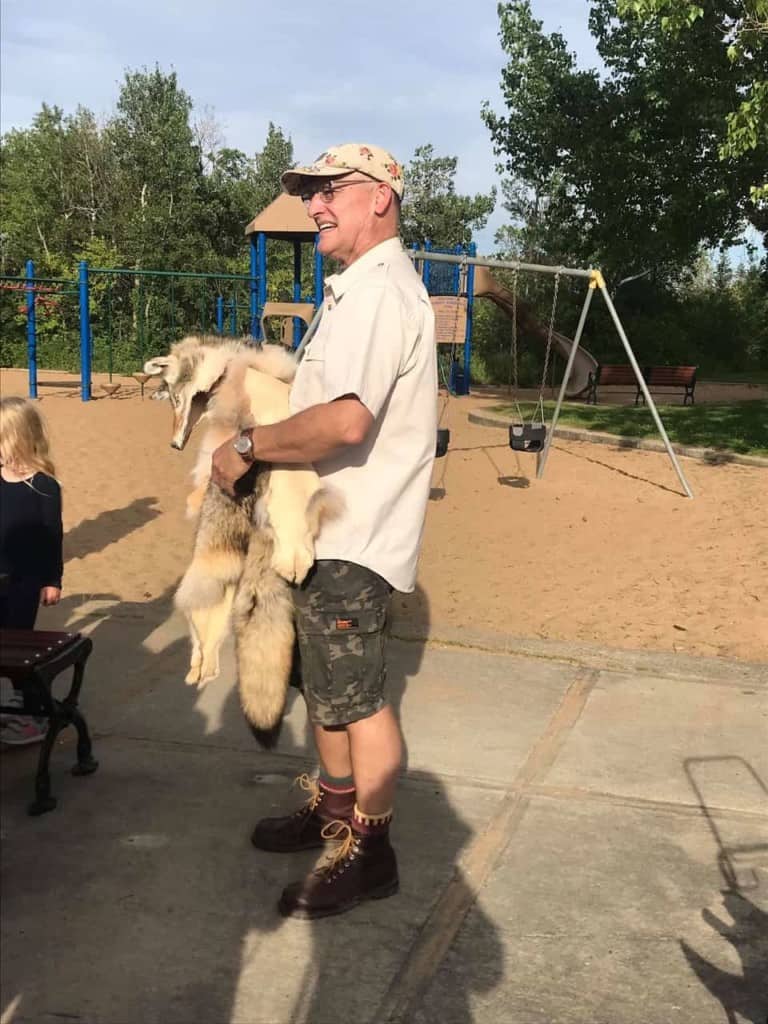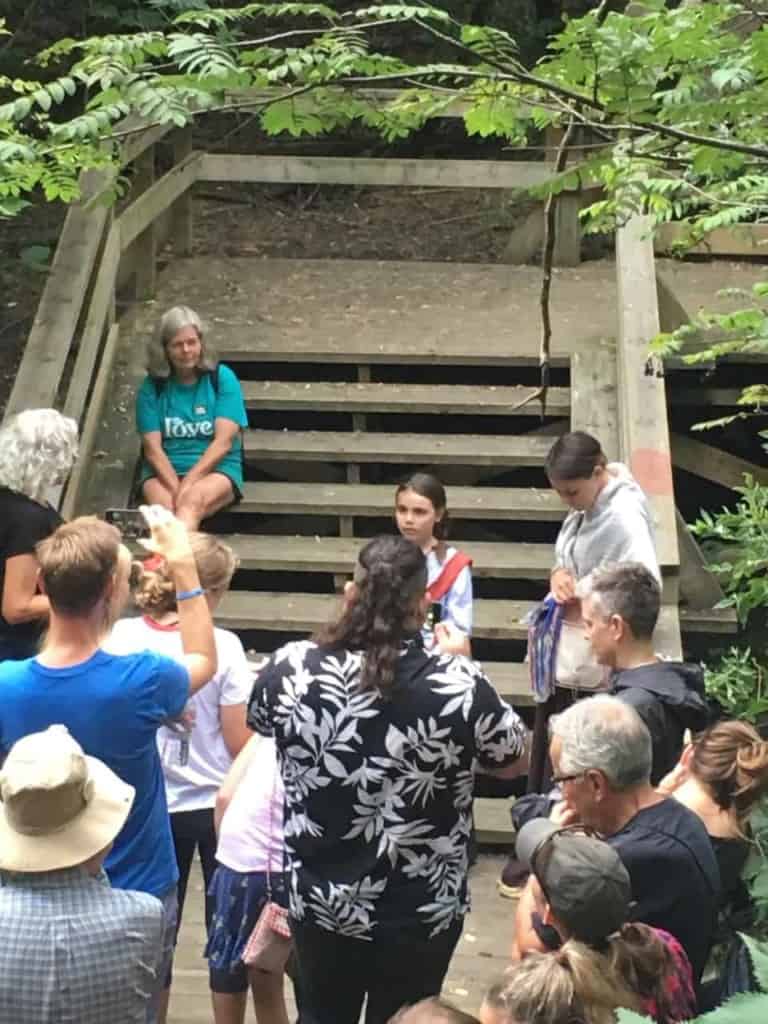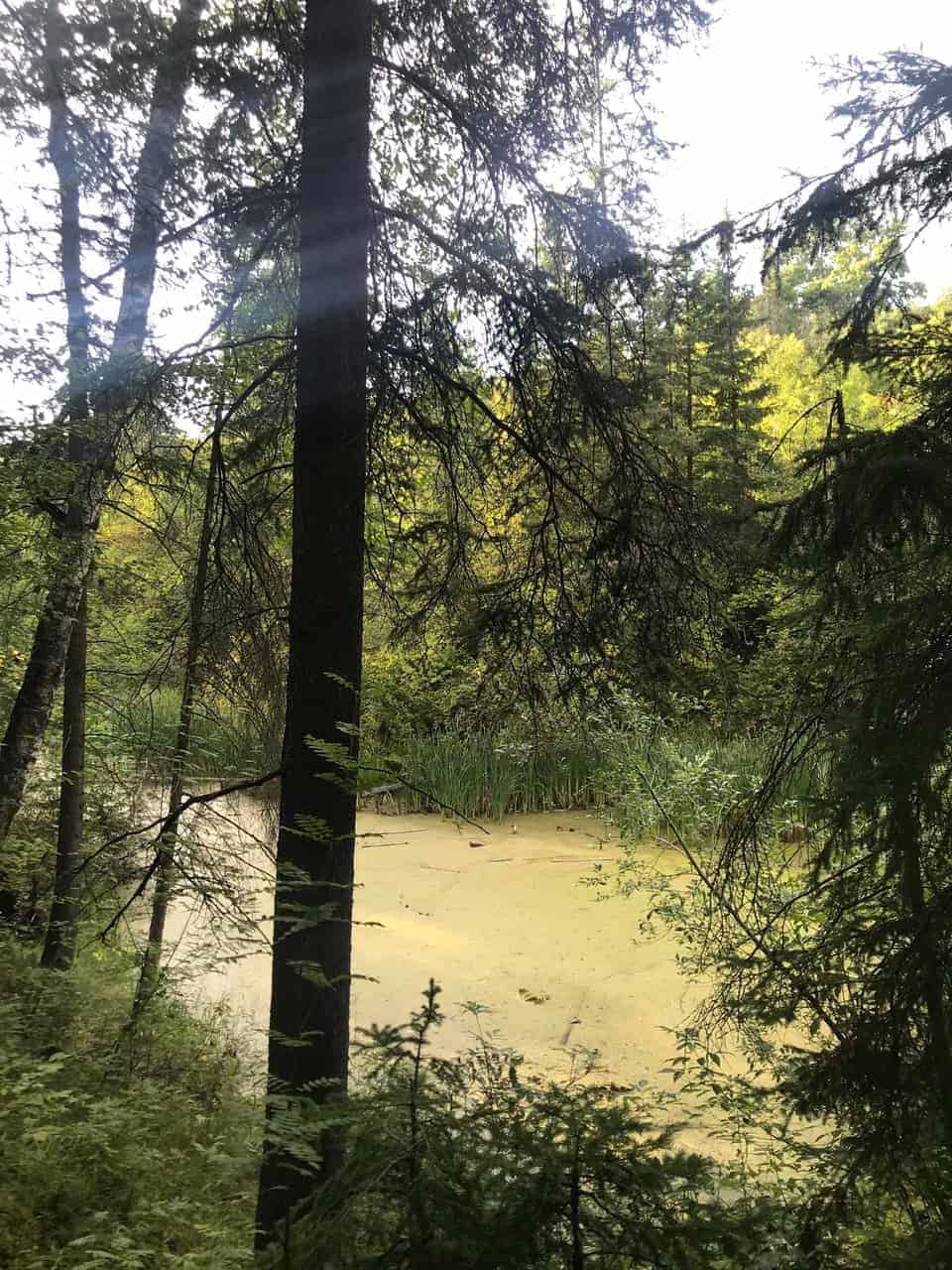Learning about local nature and history
Ravine walk revealed interesting information to participants
Why is the creek at the bottom of Kinnaird Ravine called Rat Creek? In the 1880s, it extended past where the Stadium is now located. At that time, there was enough water to support muskrats, which were harvested by local trappers. Thus the name Rat Creek is short for Muskrat Creek.
On Aug. 21, Parkdale-Cromdale Community League sponsored a nature and history walk that started at Sheriff Robertson Park and continued down Kinnaird Ravine, ending in Dawson Park. Community member Elvis Pineda conceived the walk at the league’s Ideas Night in the winter. Pineda envisioned nature and history stations that would illuminate the diversity and richness of the ravine. He pulled a team of community members together to help him realize this vision, and the end result was an amazing mix of nature, art, history, and, most importantly, community sharing.
Twenty-five people met at Sheriff Robertson Park. Many Parkdale and Cromdale residents participated as well as guests from the Riverdale and Oliver neighbourhoods. First we enjoyed a presentation by local master naturalist Kevin Cantelon, who discussed the evolution of wildlife in the ravine and shared his collection of bones, which included coyotes, birds, and bison.

Next, we walked down to the ravine trail, where Sebastian Barrera was on hand to talk about the Parkdale-Cromdale mural project. Over 60 murals were installed on the retaining walls four years ago, and last year they were removed for renewal and restoration.The new and restored murals were installed in late August.
As we proceeded down the ravine, children took pictures with cameras provided by Kids for Cameras. They got close-ups of mushrooms (plentiful this year), wildflowers, rock formations, and plants. Watch for their pictures on the Parkdale-Cromdale Community League website (parkdalecromdale.org).
The children were also busy looking for four different tree species.
Sarah De Lano, the league’s program director, organized the scavenger hunt and made a scavenger hunt punch card with pictures of the tree leaves and put hole punches on representative trees for the children to find and complete their cards. It was wonderful to see their joy and participation.
When we arrived at the stairs around 78 Street, I played my role as the local historian and announced that we were now time travelling back to 1895. At the bottom of the stairs, close to Rat Creek, were a Métis mother and child (acted by De Lano and Maiara Barrera, who are proud Métis). They played the roles of Sarah and Edith Kirkness, whose family were original settlers of the River Lot that extended north all the way to 118 Avenue, south to the river, and east to Concordia College. Most of Kinnaird Ravine was on their land. Sarah and Edith were collecting berries and shared them with us. They answered questions about their lives in 1895. To learn more about the Kirkness family, check out the blog at albertashistoricplaces.com.
We returned to the present day and continued along the ravine, where Cantelon led us down a steep slope to view the beaver pond. It was covered in duckweed, and Cantelon explained that no beavers live there now. People used to skate on it in the winter. Beside the pond is a great grey lump that nothing grows on. These are the remains of the Standard Coal Mine that operated in the early 1900s, while people lived in the new Virginia Park subdivision, meters away. The mine blasts often woke local residents.

We scrambled back up the slope and continued taking photos, searching for the scavenger hunt trees, and meeting new neighbours. The ravine was cool, and although we had to stop a few times to apply mosquito repellent, it was wonderful, an oasis of nature in the middle of the city.
Near the end of the ravine trail, Pineda stopped us to talk about trees and demonstrated tree boring. His tool made a tapping sound. He took a sample out of a tree, and we counted the rings. Pineda’s enthusiasm for nature was evident as he talked about the many species of trees that surrounded us.
Finally the group emerged into Dawson Park, where we enjoyed snacks arranged by De Lano and Sarah Dotimas (who helped with logistics and hosting at the end of walk). Some people walked to the swing that hangs from a tree over the river, while others patted the lovely dogs that joined us on the walk and shared names and stories.
It was a memorable walk for everyone. Thanks to Pineda and the volunteers who made this happen!
Featured Image: The beaver pond is now covered in duckweed. People also used to skate on it. | Supplied







